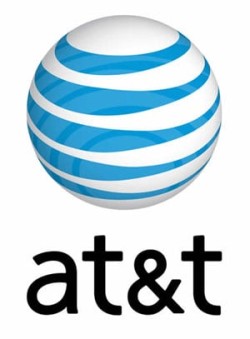
Williams Companies Inc (NYSE:WMB) – Analysts at Jefferies Financial Group cut their FY2019 EPS estimates for Williams Companies in a note issued to investors on Wednesday, July 18th. Jefferies Financial Group analyst C. Sighinolfi now anticipates that the pipeline company will earn $0.93 per share for the year, down from their prior estimate of $1.29. Jefferies Financial Group currently has a “Buy” rating and a $34.00 target price on the stock.
Get Williams Companies alerts:A number of other equities research analysts have also recently weighed in on WMB. ValuEngine upgraded shares of Williams Companies from a “sell” rating to a “hold” rating in a research report on Thursday. US Capital Advisors reiterated a “buy” rating on shares of Williams Companies in a research report on Tuesday, July 17th. Scotiabank upgraded shares of Williams Companies from a “sector perform” rating to a “buy” rating in a research report on Friday, May 18th. Zacks Investment Research upgraded shares of Williams Companies from a “strong sell” rating to a “hold” rating in a research report on Friday, April 20th. Finally, Seaport Global Securities assumed coverage on shares of Williams Companies in a research report on Wednesday, April 25th. They set a “buy” rating and a $28.00 price target for the company. Five analysts have rated the stock with a hold rating and twelve have assigned a buy rating to the company’s stock. The stock has a consensus rating of “Buy” and a consensus price target of $33.31.
Shares of WMB opened at $28.80 on Friday. Williams Companies has a 1-year low of $24.00 and a 1-year high of $33.67. The stock has a market cap of $23.75 billion, a price-to-earnings ratio of 45.71 and a beta of 1.39. The company has a quick ratio of 1.03, a current ratio of 1.11 and a debt-to-equity ratio of 1.34.
Williams Companies (NYSE:WMB) last announced its quarterly earnings results on Wednesday, May 2nd. The pipeline company reported $0.19 earnings per share for the quarter, missing analysts’ consensus estimates of $0.21 by ($0.02). Williams Companies had a net margin of 24.02% and a return on equity of 3.61%. The company had revenue of $2.09 billion for the quarter, compared to analyst estimates of $2.09 billion. During the same quarter in the prior year, the business earned $0.14 earnings per share.
Several hedge funds and other institutional investors have recently bought and sold shares of WMB. BlackRock Inc. lifted its stake in Williams Companies by 13.4% in the first quarter. BlackRock Inc. now owns 87,783,397 shares of the pipeline company’s stock worth $2,182,295,000 after acquiring an additional 10,354,857 shares during the last quarter. Franklin Resources Inc. lifted its stake in Williams Companies by 19.9% in the first quarter. Franklin Resources Inc. now owns 26,256,271 shares of the pipeline company’s stock worth $652,731,000 after acquiring an additional 4,364,798 shares during the last quarter. Millennium Management LLC lifted its stake in Williams Companies by 5,129.6% in the first quarter. Millennium Management LLC now owns 4,391,858 shares of the pipeline company’s stock worth $109,182,000 after acquiring an additional 4,307,878 shares during the last quarter. Hamlin Capital Management LLC purchased a new position in Williams Companies in the second quarter worth approximately $80,810,000. Finally, Canyon Capital Advisors LLC purchased a new position in Williams Companies in the first quarter worth approximately $70,055,000. 85.59% of the stock is owned by institutional investors and hedge funds.
In other Williams Companies news, Director Stephen I. Chazen acquired 4,000 shares of the stock in a transaction dated Friday, May 25th. The stock was acquired at an average price of $26.71 per share, with a total value of $106,840.00. Following the completion of the purchase, the director now owns 29,610 shares in the company, valued at approximately $790,883.10. The purchase was disclosed in a document filed with the SEC, which is available through this hyperlink. Also, VP Ted T. Timmermans sold 12,392 shares of the firm’s stock in a transaction that occurred on Tuesday, May 22nd. The shares were sold at an average price of $28.08, for a total transaction of $347,967.36. Following the completion of the transaction, the vice president now directly owns 27,347 shares of the company’s stock, valued at approximately $767,903.76. The disclosure for this sale can be found here. Company insiders own 0.53% of the company’s stock.
The firm also recently disclosed a quarterly dividend, which was paid on Monday, June 25th. Stockholders of record on Friday, June 8th were paid a $0.34 dividend. This represents a $1.36 annualized dividend and a dividend yield of 4.72%. The ex-dividend date of this dividend was Thursday, June 7th. Williams Companies’s payout ratio is 215.87%.
Williams Companies Company Profile
The Williams Companies, Inc operates as an energy infrastructure company primarily in the United States. It owns and operates natural gas pipeline system extending from Texas, Louisiana, Mississippi, and the Gulf of Mexico through Alabama, Georgia, South Carolina, North Carolina, Virginia, Maryland, Delaware, Pennsylvania, and New Jersey to the New York City metropolitan area.
Read More: Book Value Per Share �� BVPS
 Michael A. Robinson
Michael A. Robinson Traders bought shares of AT&T Inc. (NYSE:T) on weakness during trading hours on Thursday. $303.51 million flowed into the stock on the tick-up and $177.90 million flowed out of the stock on the tick-down, for a money net flow of $125.61 million into the stock. Of all equities tracked, AT&T had the highest net in-flow for the day. AT&T traded down ($0.11) for the day and closed at $32.60
Traders bought shares of AT&T Inc. (NYSE:T) on weakness during trading hours on Thursday. $303.51 million flowed into the stock on the tick-up and $177.90 million flowed out of the stock on the tick-down, for a money net flow of $125.61 million into the stock. Of all equities tracked, AT&T had the highest net in-flow for the day. AT&T traded down ($0.11) for the day and closed at $32.60 Pool (NASDAQ:POOL) was downgraded by Zacks Investment Research from a “buy” rating to a “hold” rating in a report issued on Wednesday.
Pool (NASDAQ:POOL) was downgraded by Zacks Investment Research from a “buy” rating to a “hold” rating in a report issued on Wednesday.